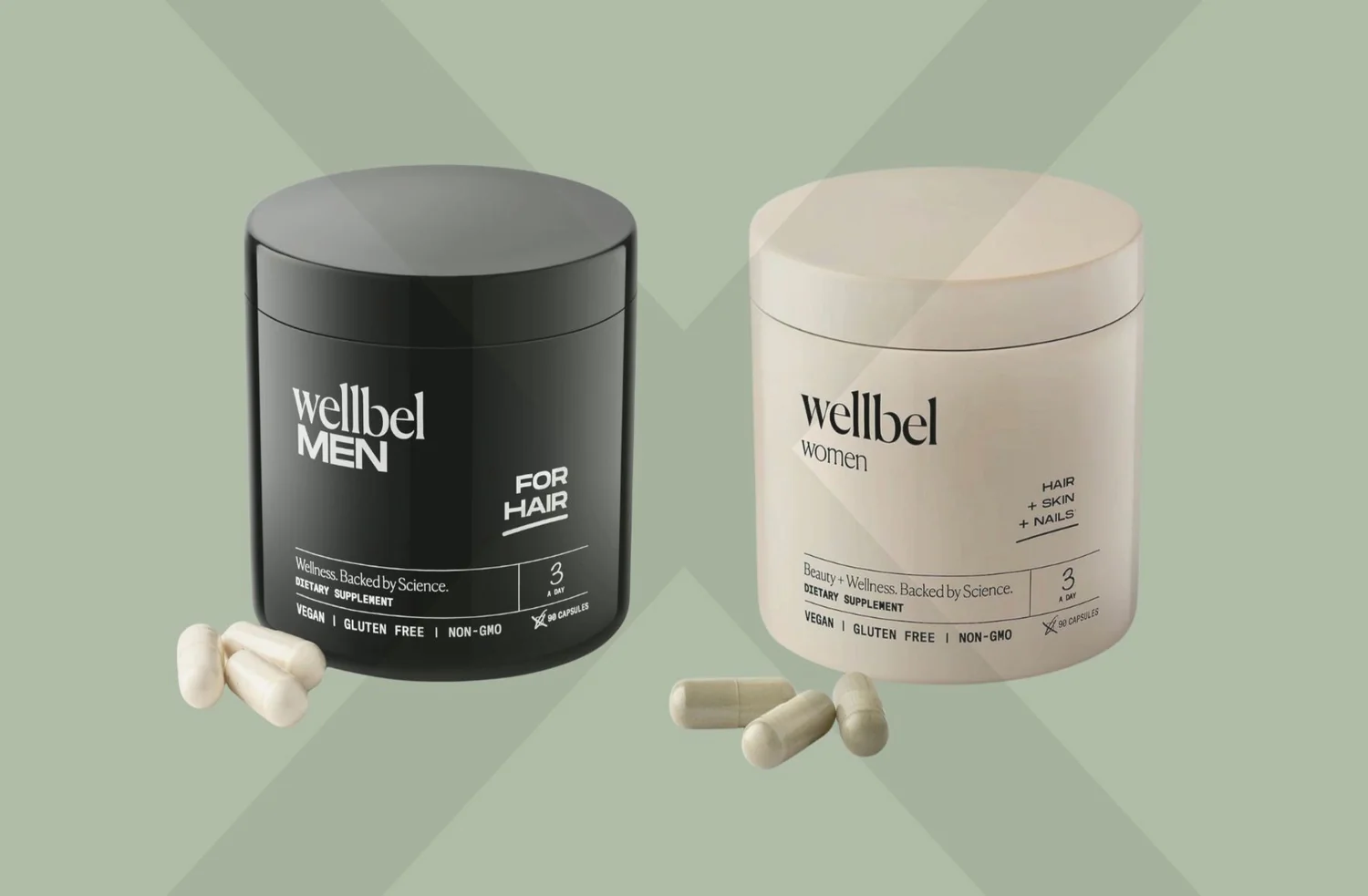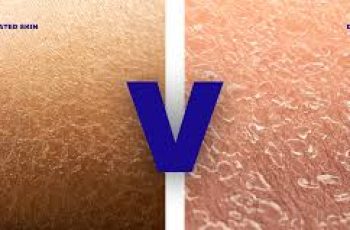
Wellbel Alternatives for Hair Growth and Density
If you’re suffering from hair loss—whether due to hormonal fluctuations during menopause or after pregnancy, stress, illness, diet, genetics, or any number of other reasons—you’ve undoubtedly come across countless products that promise to make your hair fuller, shinier, and more gorgeous—with a style built around more gorgeous hair.
One product on the market, Wellbel®, is a vegan dietary supplement designed to promote healthy hair, skin, and nails. It consists of vitamins, minerals, and phytonutrients, delivered in capsule form.
However, Wellbel is expensive, costing $204 for a three-month supply, and is only available in oral form, with no topical gels or creams. 1
So today we’re going to look at some alternatives to Wellbel.
Understanding Hair Growth and Loss
To understand how these products work, it’s important to first understand what causes hair growth and loss. The hair growth cycle consists of three phases: anagen, catagen, and telogen2:
Anagen: The active growth phase that can last for several years.
Catagen: The transition phase where hair stops growing and separates from the follicle. This phase lasts about 10 days.
Telogen: The resting phase where the follicle rests for two to three months before the hair falls out.
Most people lose 50 to 100 hairs a day as part of this natural cycle. 2 If this cycle is disrupted or the follicles become damaged, hair can fall out faster than it can grow back, which can cause thinning hair. 2 This can be due to genetics, disease, hormones, lifestyle, stress, and other factors. 3
Luckily, there are things you can do to manage hair loss.
Vitamins and Minerals
According to Harvard Health, the most important vitamins and minerals for supporting hair growth include:
Vitamin A
Vitamin B2 (Riboflavin)
Vitamin B3 (Niacin)
Vitamin B7 (Biotin)
Vitamin B9 (Folic Acid)
Vitamin B12
Vitamin C
Vitamin D
Vitamin E
Iron
Selenium
Zinc
Wellbel contains vitamins A, D, B12, selenium, folic acid, and biotin. It also contains MSM, horsetail powder, saw palmetto fruit extract, nettle leaf, PABA, and betaine HCl.
Let’s compare it to Foundation Skincare’s Untangled supplement. It contains some similar ingredients:
Vitamin A: 1,500 mcg in Wellbel/900 mcg in Untangled
Vitamin D: 25 mcg in Wellbel/20 mcg in Untangled
Selenium: 25 mcg in Wellbel/55 mcg in Untangled
Folic acid: 667 mcg in Wellbel/400 mcg in Untangled
Biotin: 500 mcg in Wellbel/30 mcg in Untangled
Plus, both contain proprietary blends that include saw palmetto powder and horsetail powder, among others.
However, there are also some notable differences between the two products:
Unlike Wellbel, Untangled also contains zinc, iron, pantothenic acid, vitamin C, vitamin E, collagen, L-arginine, L-cysteine, L-methionine, and L-tyrosine—other ingredients that have been shown to promote healthy hair. 4,5,6 ,7 Additionally, the amounts of each ingredient in UnTangled are scientifically selected based on optimal levels to help achieve the best results. It’s also very important to be mindful of the amount of biotin you consume each day, as too much biotin may have adverse side effects. Lastly, a two-month supply of Wellbel costs $136, while a two-month supply of Untangled costs just $65.1. It’s also worth noting that the serving size for Wellbel is three capsules per day, but the serving size for Untangled is only two capsules per day, which may be easier for some people who have trouble taking supplements.
Detangled Hair Supplement
Detangled Hair Supplement
• 2-month supply
• Reduces hair loss and thinning
• Strengthens hair follicles
Original price $65
Add to cart
Topical treatments
In addition to oral supplements, topical treatments applied directly to the scalp can also promote hair growth. Like supplements, these products often contain vitamins, minerals, herbs, and acids. These products directly stimulate the hair follicles and can be a great addition to supplements to improve results.
Wellbel does not offer topical treatments.
However, Foundation Skincare’s Hair Serum is a great complement to the Foundation Untangled supplement. This serum contains similar ingredients to the supplement, including saw palmetto. In addition, it contains Capixyl (a biomimetic peptide that helps shrink hair follicles), apple stem cells to promote regeneration, and cayenne pepper extract to stimulate blood circulation to the scalp.
Prescription and OTC Drugs
In addition to supplements and topical treatments, there are prescription and over-the-counter medications. The most well-known hair growth products include Rogaine® and Ketoconazole.
Rogaine is the brand name for the drug minoxidil. It was originally developed as a blood pressure medication and acts as a vasodilator (it widens blood vessels). Therefore, when applied topically, it can promote hair growth by increasing blood flow to the scalp. When using the product for the first time, side effects may include scalp irritation or hair loss. High doses can cause irregular heartbeats and hot flashes, so a prescription is required and it must be used with caution. 8
Ketoconazole is also a medication. It was originally used to treat fungal infections, but when used topically or in shampoo, ketoconazole is thought to block the effects of DHT, a hormone that, when there is too much DHT in the body, causes hair follicles to shrink. 9.10 This is similar to how the herbal ingredient saw palmetto in Wellbel and UnTangled works.
Lifestyle Adjustments
In addition to taking supplements, medications, or topical treatments, making certain lifestyle changes can improve hair health. Studies have shown that low-calorie crash diets can lead to excessive hair loss, as can excessive exercise. Excessive stress, excessive alcohol consumption, and an unhealthy diet can all contribute to hair loss, as can certain hair care habits. 11
For example, the American Academy of Dermatology recommends washing oily hair more often, color-treated hair less often, focusing shampoo on the scalp and conditioner on the ends, choosing shampoo and conditioner based on your specific hair type, and protecting your hair when swimming. 12 All of these things can have a significant impact on the health and growth of your hair and should become part of your new routine, as these lifestyle changes can significantly improve your overall results.
When to See a Professional
You should see a doctor if your hair loss is sudden, patchy, or more severe than usual. Sudden hair loss can sometimes be a sign of an underlying condition that needs treatment.
As mentioned above, shedding about 50 to 100 hairs a day is considered normal—it’s part of your hair’s natural growth and shedding cycle. 2 However, if you’re self-conscious about thinning hair or simply want thicker hair, there’s no shame in getting a little extra support.
Wellbel is a great product with great ingredients, but it can be a little pricey for some and doesn’t offer topical options. To combat hair loss from the inside out, we recommend combining Foundation Skincare’s UnTangled supplement and hair serum, which costs just $124 for a two-month supply, or even less if you love it and opt for a subscription.


